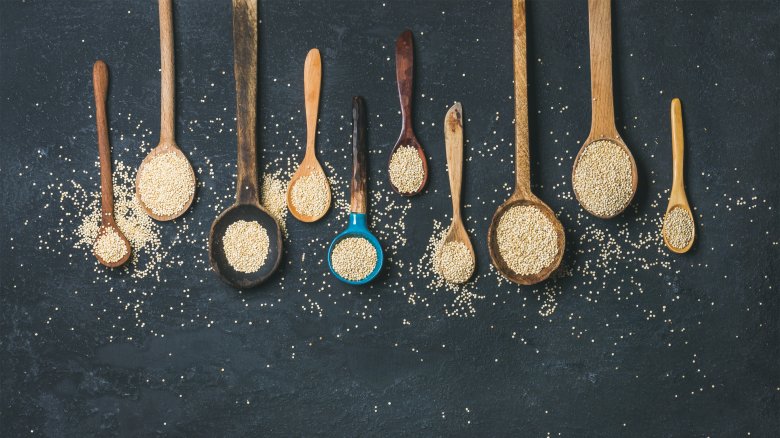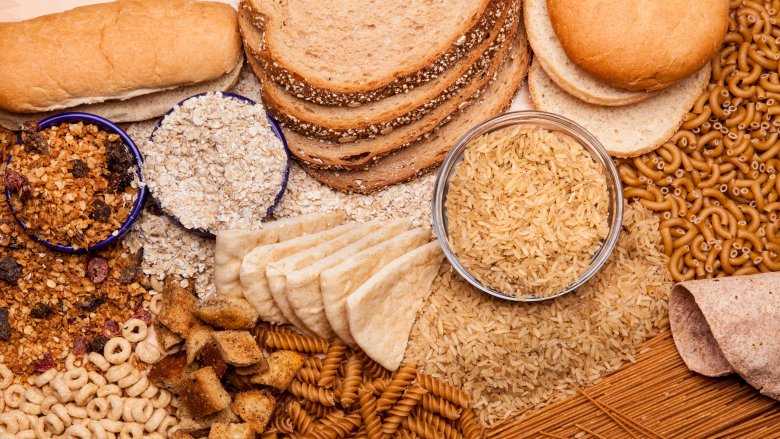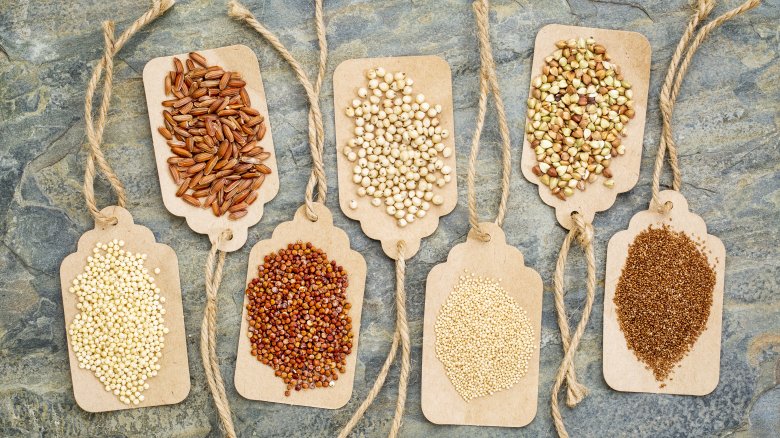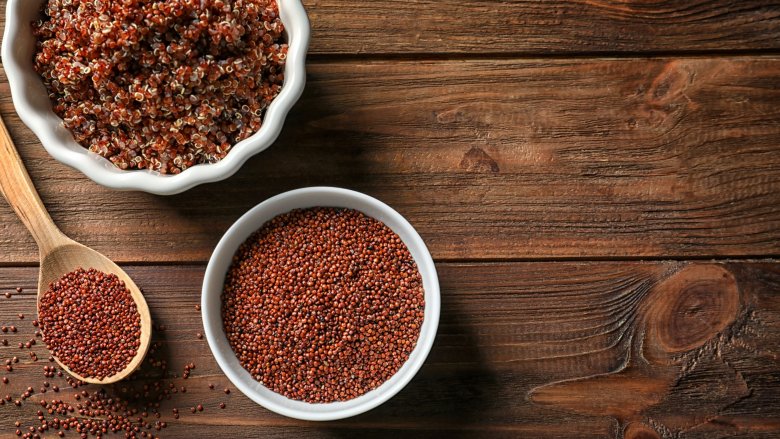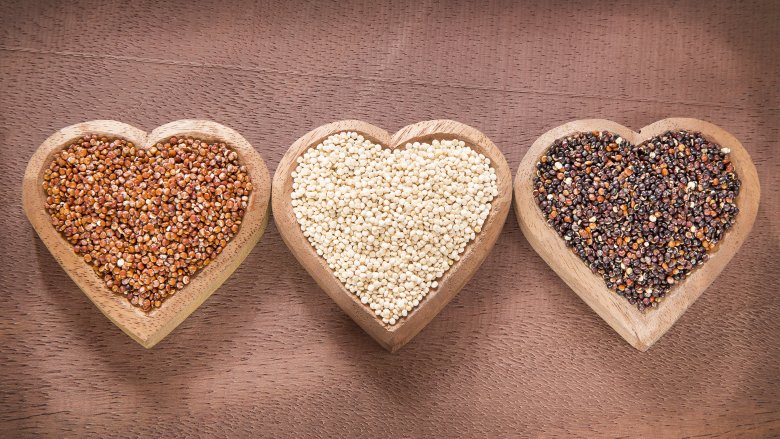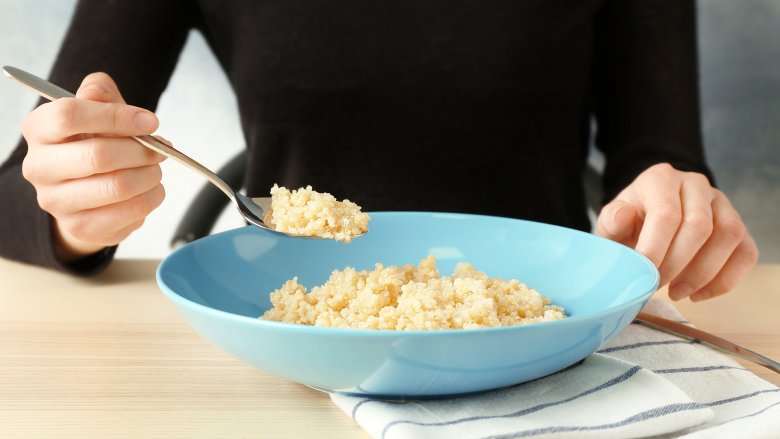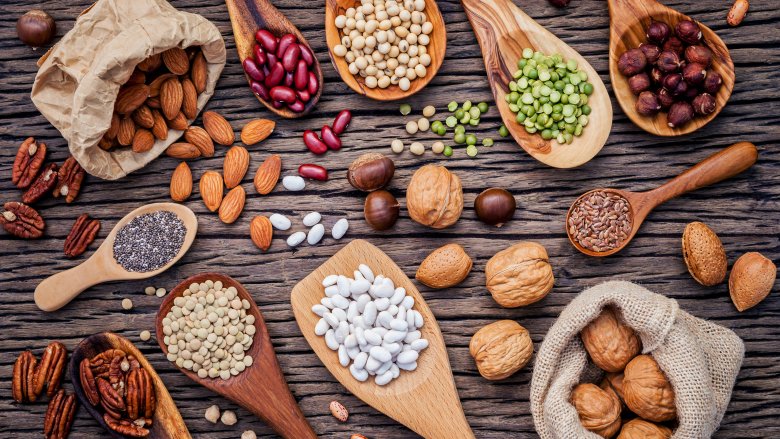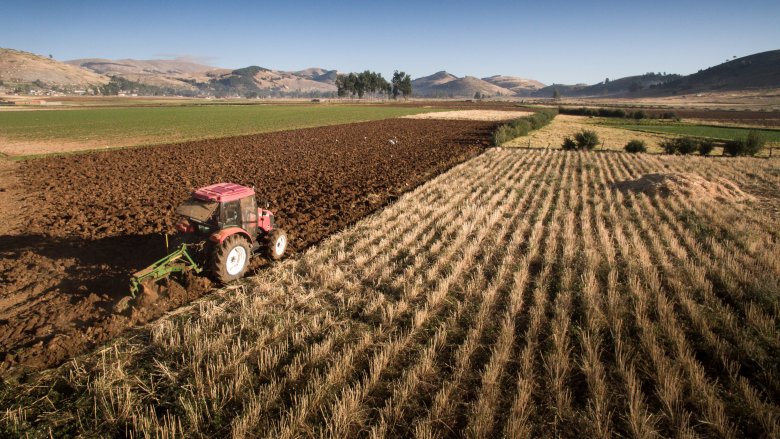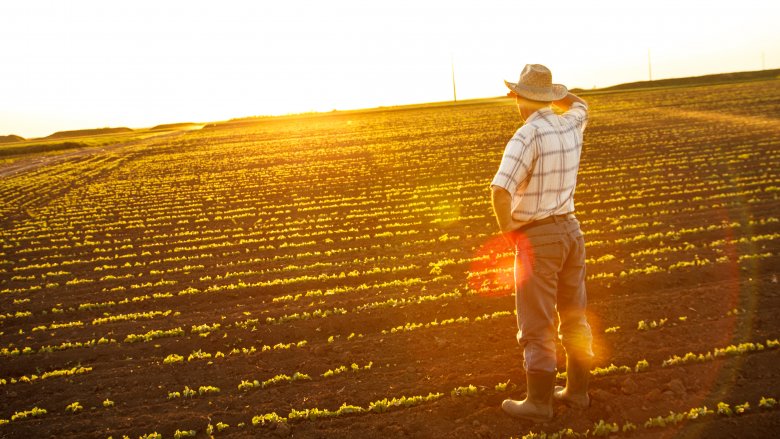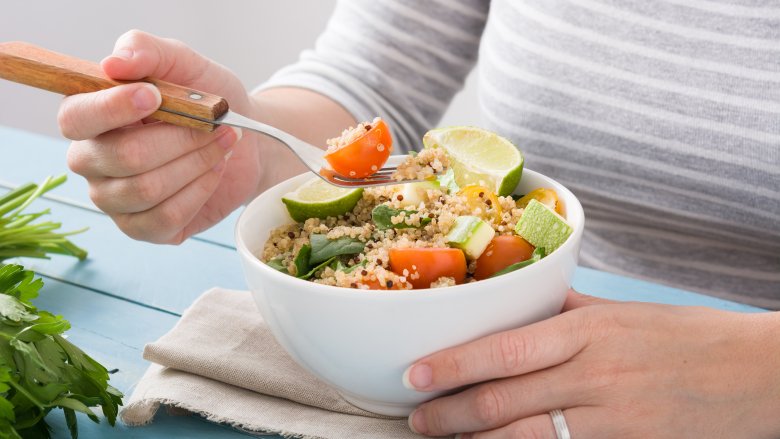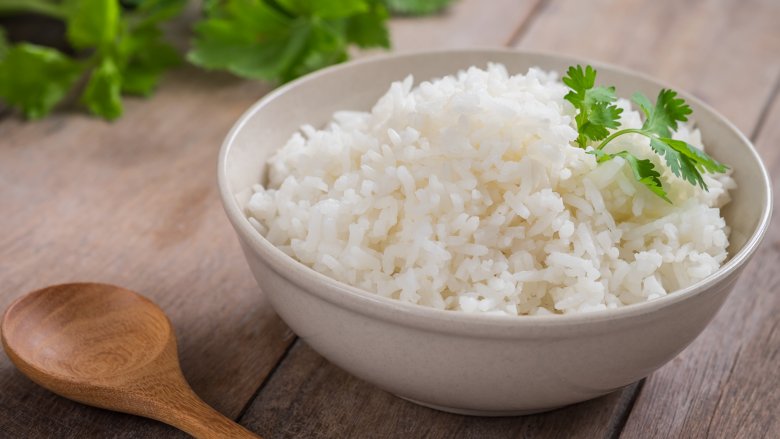False Facts About Quinoa You Always Thought Were True
If you've scrolled through your Pinterest feed lately, then you're probably familiar with quinoa. This tiny little seed is loaded with nutrients and has inspired health and food bloggers to go crazy with recipes for quinoa salad, pizza crust, and even desserts.
Our obsession with quinoa is still relatively recent. In fact, in the last decade the price of quinoa has tripled due to high demand. While we love concocting delicious dishes with quinoa, most of us don't know much about it. Quinoa has seen its fair share of rumors and misconceptions, so let's dive in and investigate some of those false facts.
Myth: Quinoa is a grain
Because so many of us use quinoa in place of carbs, we assume that quinoa is a grain, but it's not. "We call quinoa a whole grain, but it is actually a seed," nutrition and cooking coach Libby Mills, MS, RD told me. "Because of it's starchy qualities, it gets categorized with other starchy foods... like beans, lentils, dried peas, potatoes, and oatmeal."
Quinoa seeds come from a plant similar to spinach. "It comes from a leafy plant that originated in the Andean region of South America. The plant is closely related to spinach and amaranth, and the seeds can be cooked the same way as rice," president and co-founder of I Heart Keenwah Ravi Jolly told me. "Adopters of a grain-free and paleo lifestyle are free to eat quinoa as part of a balanced diet."
Myth: Quinoa contains gluten
If you have celiac disease or a gluten sensitivity, you've most likely done your research and given up quite a few starches like breads and pastas. However, quinoa doesn't have to go on your banned list. While it is still a starch, quinoa is safe for those who can't eat gluten.
"Because quinoa does contain starch, people often think that like many other whole grains, quinoa contains gluten," Mills told me. "But, quinoa is naturally gluten free and is well tolerated by those with gluten sensitivity and celiac disease."
Myth: It takes a long time to cook quinoa
One beef that many people have with quinoa is that it takes too long to cook. Many of us would rather toss some white rice on the stove and have dinner in a matter of minutes. However, quinoa doesn't take much longer than that, and the benefits are certainly worth it.
"Quinoa doesn't take long to prepare," clinical dietitian Becky Kerkenbush, MS told me. "It can be cooked in under 15 minutes, whereas brown rice can take 30 minutes."
Myth: Quinoa comes in three colors
When searching for quinoa at the grocery store, I usually come across white, black, and red varieties. However, there's a huge range out there. "Quinoa isn't just white," said Kerkenbush. "There are over 100 kinds of quinoa including red, white, black, pink, gray, purple, green, and orange."
The different types of quinoa can taste slightly different too. "There are technically hundreds of varieties of quinoa, and exporters have categorized these varieties into three main color families: white, red and black," explained Jolly. "Within the white quinoa family, for example, there are several different varieties of white with funky names such as toledo and amarillo. The most ancient and heirloom varieties of quinoa come from Bolivia. Bolivian quinoa is also known as Royal Quinoa, prized for its larger seed size and unique taste-profile, whereas other types are just conventional quinoa."
Myth: Quinoa has a bitter taste
As an avid food blog reader, I've read countless times that quinoa has a bitter taste. However, quinoa itself is not bitter. Actually, it may be feeling a little bitter for all the bad press it gets about it's taste. Quinoa often has a coating on the seed that may taste bitter to some.
"When properly prepared, quinoa should taste like roasted sesame seeds or even peanuts. If your quinoa tastes bitter, it's likely in need of a washing to remove the bitter saponin coating. Earthy or grassy is how quinoa tastes in it's raw state, but quinoa should actually be toasted before it's boiled," I Heart Keenwah Marketing Director Natalie Slater told me. "Think about the difference between a raw peanut and a roasted peanut – one tastes better, right? Dry quinoa should be toasted until it smells like roasted sesame seeds, then washed, then boiled." While roasting does add an extra step, it can really pump up the naturally hearty flavor.
Myth: Quinoa is a new superfood
Even though quinoa seems to have come out of nowhere in the last few years, there's nothing new about it. Quinoa is actually an ancient seed that people have been eating for centuries. It typically grows well in poor soil with dry climates. "Quinoa is not a new superfood or fad," explained Kerkenbush. "People have been eating quinoa for over 4,000 years."
So despite your beautiful Instagram feed of quinoa smoothie bowls, Bolivian farmers were on trend way before us.
Myth: Quinoa farmers can't afford to eat it
As the popularity of quinoa has skyrocketed in the last decade, rumors started floating around about what that demand was doing to poor farmers. We started to hear that because of the high demand, quinoa prices had risen so much that the quinoa farmers themselves could no longer afford to eat the seed. However, this was false. Rising quinoa prices actually meant more profits for small farmers.
"The 2013 boom in quinoa (a result of the United Nations' launching the International Year of Quinoa campaign) resulted in a rapid increase in quinoa pricing. However, much of the boom benefited people in quinoa-growing regions in Bolivia and Peru," Jolly told me. "Farmers were able to invest excess profits in infrastructure and farming equipment. Urban dwellers, in contrast, were less affected by the pricing surge of quinoa, given their propensity to eat more globalized foods such as rice and pasta over quinoa."
One part of this rumor was true though. Quinoa farmers started eating less quinoa, but not because they couldn't afford it. They cut back, because they could finally afford to buy other types of food. "That was the time when the smaller producers were doing quite well and had a lot of leverage," researcher and writer Tanya Kerssen told Time. "The issue of quinoa being too expensive for farmers to eat is not accurate. That really irritates people here."
Myth: The quinoa demand is good for small farmers
While the quinoa demand has meant big business for small farmers in recent years, that's unfortunately changing. As big businesses slowly take over the market, they're able to price out the smaller farmers. "Quinoa has become a global commodity, and although some farmers and companies have profited, it's also caused a lot of problems for people on the ground, for many Bolivian farmers," Kerssen told Time. "This is not unique to quinoa; it's why small organic farmers struggle all over the world."
Myth: Quinoa provides all the protein you need
Quinoa has become known as a superfood for its rich nutrient panel and complete protein status. "People know that quinoa is a good source protein with eight grams per cup, but they don't realize that it is a complete protein, meaning it contains all the essential amino acid building blocks we need," explained Mills. "This is unusual, because most whole grains are missing the essential amino acid lysine."
Even though it is a complete protein, quinoa still can't provide all the protein you need in a day. "While quinoa does contain all nine essential amino acids (the units which make up an ideal protein), this only makes quinoa a nutritionally-dense food, not necessarily a protein-packed one. At eight grams of protein per cup, quinoa hardly stacks up against the protein heavyweights of the food world like lean chicken (45 grams per cup), tuna (40 grams), or eggs (30 grams)," Nutritional Expert and Researcher for Maple Holistics Hayley Ellis told me. "Quinoa is definitely nutritionally-dense and can be a good part of a healthy diet, but don't expect it to help you pack on the muscle or make up your daily protein intake."
Myth: Quinoa is solely a rice substitute
While quinoa cooks up quickly like rice, it can be used for a variety of dishes. "Quinoa is an extremely versatile and nutrient-dense staple. While it can be cooked the same way as rice, it can also be used in baking recipes, hot cereal, drinks, granola, and snacks," shared Jolly.
Next time you're at the grocery store, peruse the aisles and check out quinoa flour, flakes, milk, and more. This nutty little seed does it all.
